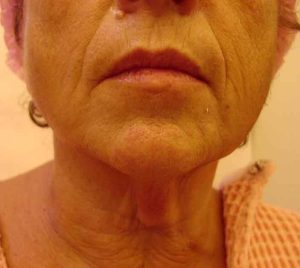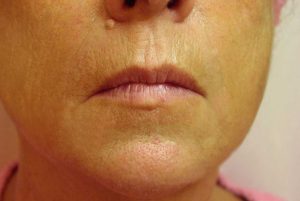[et_pb_section bb_built=”1″ fullwidth=”off” specialty=”off” _builder_version=”3.0.101″ border_radii=”on|20px|20px|20px|20px” border_width_all=”5px” border_color_all=”#0c71c3″ border_style_all=”outset” border_width_right=”0px” border_width_bottom=”0px” box_shadow_style=”preset3″ custom_padding=”|30px||”][et_pb_row _builder_version=”3.0.101″ custom_padding=”|||30px”][et_pb_column type=”1_2″][et_pb_divider _builder_version=”3.0.101″ /][et_pb_text _builder_version=”3.0.101″ background_layout=”light” header_text_color=”#0c71c3″ text_text_color=”#0c71c3″ header_4_text_color=”#0c71c3″ header_5_text_color=”#af1616″ header_4_font=”|700|||||||” header_5_font=”|700|||||||” header_4_font_size=”23px”]
Aesthetic Medicine – Polylactic acid
Polylactic acid is a substance that has been used for many years in varied medical applications. It is
has been used in aesthetic medicine for few years to correct furrows and deeper wrinkles.
Basically it is composed by micro particles that are homogeneously injected in the sub epidermis or
more superficially in the skin.
Every micro particle of polylactic acid will provoke the formation of collagen of the patient, provoking
in this way the filling of depressions and wrinkles.
This technique is relatively new and especially French colleagues have studied it for the correction of
big depressions.
The dispersal of the active principle is fundamental in order to obtain uniform results; otherwise we
will have the formation of subcutaneous nodules that are reabsorbed very slowly. In my opinion if
they occur, they are expression of an unsuccessful technique.
Results are really encouraging and it can also be used for that initial aging of cheeks for which we
have few methods available.


Indications:
• return of important volumes for cheeks, cheekbones, shadows, but also for the fading of the
lower facial outline.
• for the horizontal wrinkles of neck when the emptying prevails.
• to fill hands, the intermetacarpal spaces.
[/et_pb_text][/et_pb_column][et_pb_column type=”1_2″][et_pb_divider _builder_version=”3.0.101″ color=”#0c71c3″ divider_weight=”2″ max_width=”33%” module_alignment=”center” /][et_pb_divider _builder_version=”3.0.101″ color=”#0c71c3″ divider_weight=”2″ max_width=”33%” module_alignment=”center” /][et_pb_text _builder_version=”3.0.101″ background_layout=”light” header_text_color=”#0c71c3″ text_text_color=”#0c71c3″ header_4_text_color=”#0c71c3″ header_5_text_color=”#af1616″ header_4_font=”|700|||||||” header_5_font=”|700|||||||” header_4_font_size=”23px”]
Informed Consent – Polylactic acid
[/et_pb_text][et_pb_button _builder_version=”3.0.101″ button_text=”Download PDF” button_url=”https://www.docredaelli.com/wp-content/uploads/2018/04/Microsoft-Word-Consenso-informato-polilattico.doc.pdf” url_new_window=”off” button_alignment=”center” background_layout=”light” custom_button=”on” button_icon_placement=”right” button_text_color=”#ffffff” button_border_color=”#0c71c3″ button_bg_color=”#0c71c3″ button_font=”|700|||||||” button_border_radius=”6″ /][et_pb_divider _builder_version=”3.0.101″ show_divider=”on” color=”#0c71c3″ divider_weight=”2″ max_width=”33%” module_alignment=”center” /][/et_pb_column][/et_pb_row][/et_pb_section]